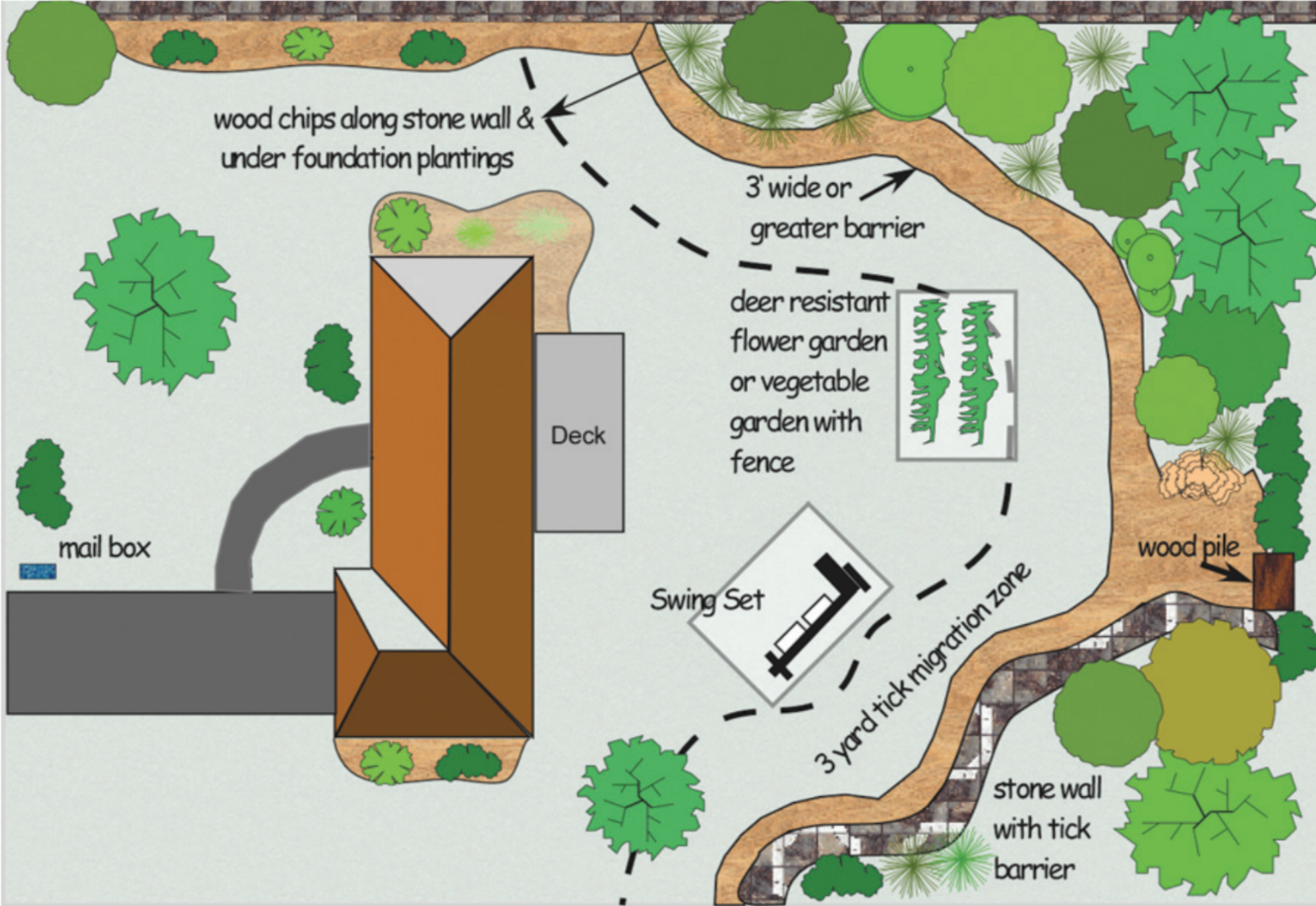 The Connecticut Agricultural Experiment Station’s Tick Management Handbook is available online.
The Connecticut Agricultural Experiment Station’s Tick Management Handbook is available online.
It has recommendations for landscape management, use of pesticides, and other practices to help build backyard and recreational habitats unfriendly to ticks.
The CDC encourages you to create a “Tick Safe Zone” in your backyard by using simple landscaping techniques that can help reduce blacklegged tick populations:
- Remove leaf litter.
- Clear tall grasses and brush around homes and at the edge of lawns.
- Place a 3-ft wide barrier of wood chips or gravel between lawns and wooded areas to restrict tick migration into recreational areas.
- Mow the lawn frequently.
- Stack wood neatly and in a dry area (discourages rodents).
- Keep playground equipment, decks, and patios away from yard edges and trees.
- Discourage unwelcome animals (such as deer, raccoons, and stray dogs) from entering your yard by constructing fences.
- Remove old furniture, mattresses, or trash from the yard that may give ticks a place to hide.
If you find a tick in your yard:
If the tick is a Lone Star tick the Vermont Department of Health asks you to participate in Project Lone Star to help track the presence of Lone Star ticks in different areas of Vermont.
The VT Agency of Agriculture Passive Tick Surveillance Program offers free identification of ticks, and monitors the distribution of ticks in the state of Vermont. (This program does not test for pathogens.)
You can also report the tick on the Ticktracker app or on the Vermont Department of Health’s ticktracker website.
